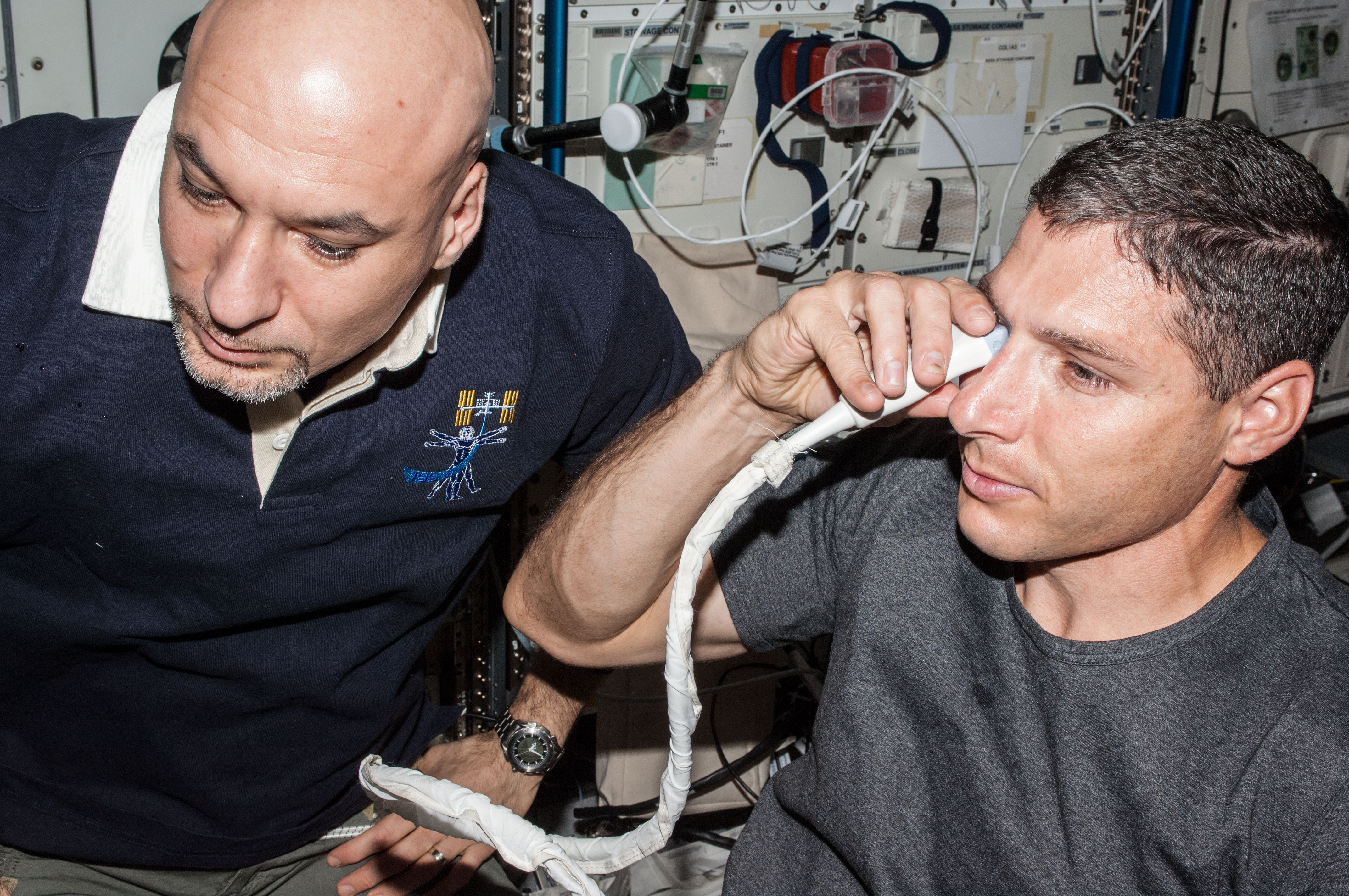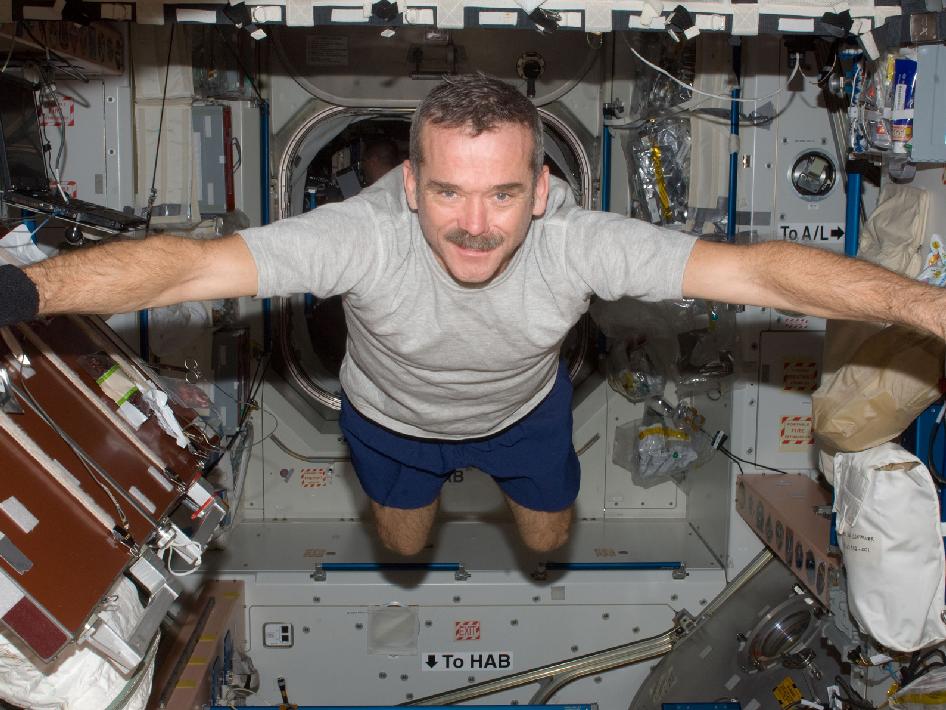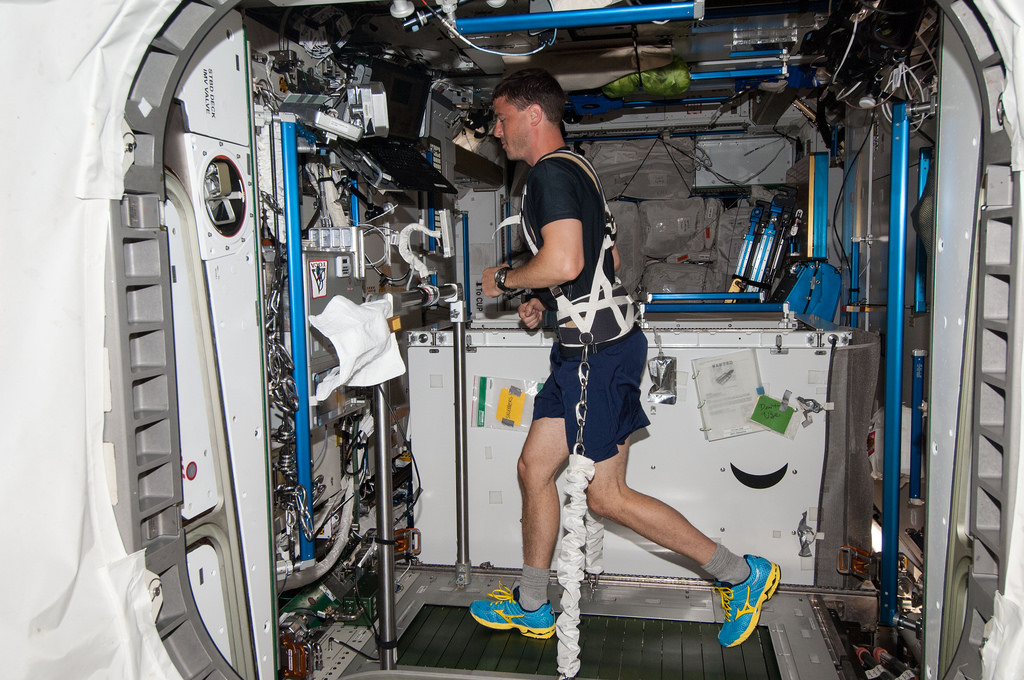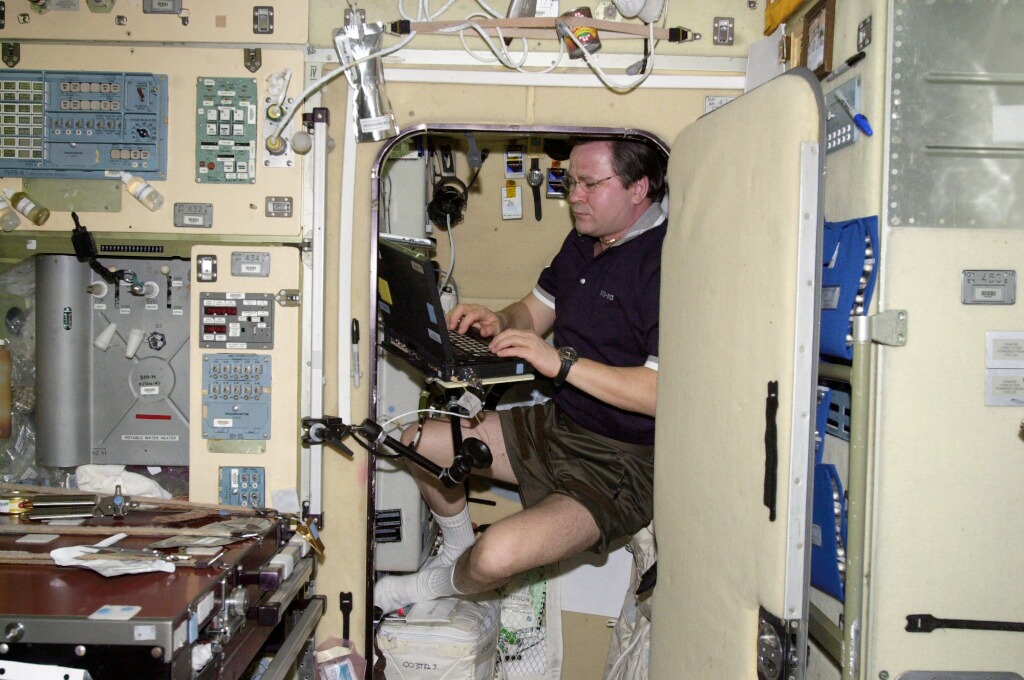NASA Astronaut Scott Kelly is seen inside a Soyuz simulator at the Gagarin Cosmonaut Training Centre (GCTC) in Star City, Russia. Image via NASA
On Friday, 29 March, two members of a three-man team from NASA and Russia’s space agency, Roscosmos, will embark on a year-long stay on the International Space Station (ISS), but how will they be affected?
With much talk lately about mankind potentially visiting other worlds, specifically Mars, in the near future, missions such as the one to be undertaken by NASA astronaut Scott Kelly and cosmonaut Mikhail Kornienko are crucial to get a better understanding of how the human body deals with being in a no-gravity environment.
While not participating in the year-long mission, the third member of the crew, cosmonaut Gennady Padalka, is planning on breaking a number of his own personal records which by the end of his six-month stay will see him as the first four-time commander of the ISS and as having spent the longest accumulative time in space of any human being.
However, while this mission is all about seeing what a consecutive year-long mission entails for the human body, the mission will not actually break the record for one continuous duration in space with that accolade going to cosmonaut Valeri Polyakov who, on his longest mission, spent an incredible 437 days aboard the Mir Space Station.
So what can Kelly and Kornienko expect from their space endurance experiment?
Given that all life on this planet developed through evolution as a result of our planet’s gravity, it’s no surprise to discover that the human body finds the effects of a complete loss of gravity as rather difficult to overcome.
1 – Blurry vision
One of the most noticeable changes from an astronaut’s perspective is that when they return to Earth, their vision may be somewhat comparable to someone who is getting towards the later years of their life and may require visual aids.
From what is understood by current science, the weightlessness of space causes the body’s fluids to gravitate upwards which puts increasing pressure on organs in the astronaut’s head, most notably pressure placed on the back of the eyeballs which affects the shape of the optic nerve causing deterioration.
Perhaps most interestingly, all of the reported cases among astronauts have been male due to something called the sternocleidomastoid muscle around the eye which is typically thicker than in women.

NASA astronaut Michael Hopkins, Expedition 37 flight engineer, performs ultrasound eye imaging in the Columbus laboratory of the International Space Station. Image via NASA
2 – Loss of balance and inner-ear functions
If you’re going into space for the first time, you might want to bring a sick bag. Due to the fact that the inner ear, which maintains your balance as you walk around, is based almost entirely off the effects of gravity and pressure placed on the ear, space can cause serious discomfort initially as the brain fails to understand what is happening to it.
Aside from motion sickness, astronauts can also become disorientated and lose their sense of direction, all of which comes crashing back down when they return to Earth which Kelly and Kornienko will experience after their year-long journey.

Canadian Space Agency astronaut Chris Hadfield, Expedition 34 flight engineer, floats freely in the Unity node of the ISS. Image via NASA
3 – Decreasing bone density
Regular exercise, such as running machines, on the ISS are crucial to the well-being of its crew as if they were to continue floating through the craft for a year, their body’s bones will begin to breakdown in the lower-half of their body as they will bear much of the load.
In percentage terms, an astronauts hip bone mass could deteriorate by as much as 1.5pc per month as the bones’ calcium seeps back into the body causing them to become significantly weak and more prone to breaking.
On top of the gravitational effects, it is also believed that prolonged exposure to space radiation could contribute to the deterioration of bone structure.

4 – Melting muscle mass
Regular gym goers might be horrified to know that if they were to spend any length of time in space, their efforts of building muscle mass wouldn’t just be to show off, but rather a vital part of ensuring that they can return to Earth and walk to the same extent as when they took off.
Once again, a lack of gravity and exertion put on a person’s muscles every day only leads to their degradation which is why, as with bone density, two hours of exercise a day and a diet that caters to their space-borne deficiencies are essential.
The two pieces of equipment on board the ISS for exercise include the Combined Operational Load Bearing External Resistance Treadmill (COLBERT) and the ARED (Advanced Resistive Exercise Device) which cover everything from running to weight-lifting.
5 – Be still, my shrinking heart
While probably one of the least-damaging effects of space, prolonged space travel has a knock-on effect to the cardiovascular system making it lazy compared with the rest of body due to the fact it doesn’t have to work as hard pumping blood around the body.
As a result, the heart shrinks in size which while fine when living in space, will cause issues when the astronauts return to Earth where gravity causes their heart to beat that bit faster given that it is once again acclimatising to gravity.
Likewise, all other bodily fluids rush upwards in astronauts leading to a number of noticeable changes compared with Earth including a puffy face due to increased blood, thinner legs and a continuous feeling of congestion which not only gives you an uncomfortable feeling, but makes all the food you eat taste like it would if you had a cold, hence many astronauts’ preference for spicy foods, as demonstrated by former Canadian astronaut, Chris Hadfield.
This also leads to an estimated 22pc of the astronaut’s blood volume due to the reduced regular stress placed on the human body.
6 – Sleeping in zero-gravity
As you rest easy in your bed tonight, spare a thought for those currently aboard the ISS, and the next year-long crew, as they attempt to once again try to get used to sleeping in a zero-gravity environment.
For some, it’s bad enough trying to sleep in an un-familiar bed, so imagine what it’s like trying to sleep in a tight wardrobe-like cabinet while floating safely attached to a harness?
Unsurprisingly, sleep deprivation is a serious issue that can effect lighter sleepers aboard with regular sleeping patterns can be easily affected and disorientated.
Not only that, the crew could be regularly woken up by alarms or other activities that are required due to the need to be ready for any eventuality, such as the one recently which saw the crew have to quickly escape to the Russian capsule over fears of an ammonia leak.
In the past, sleeping pills were taken by NASA astronauts aboard the Space Shuttle but were still found to have led to an average of two hours less sleep than they would have back on Earth.
None of which helps in curtailing the stress caused by such high-pressure daily tasks.

Cosmonaut Nikolai M Budarin, Expedition 6 flight engineer, uses a computer in a sleep station in the Zvezda Service Module on the ISS. Image via NASA